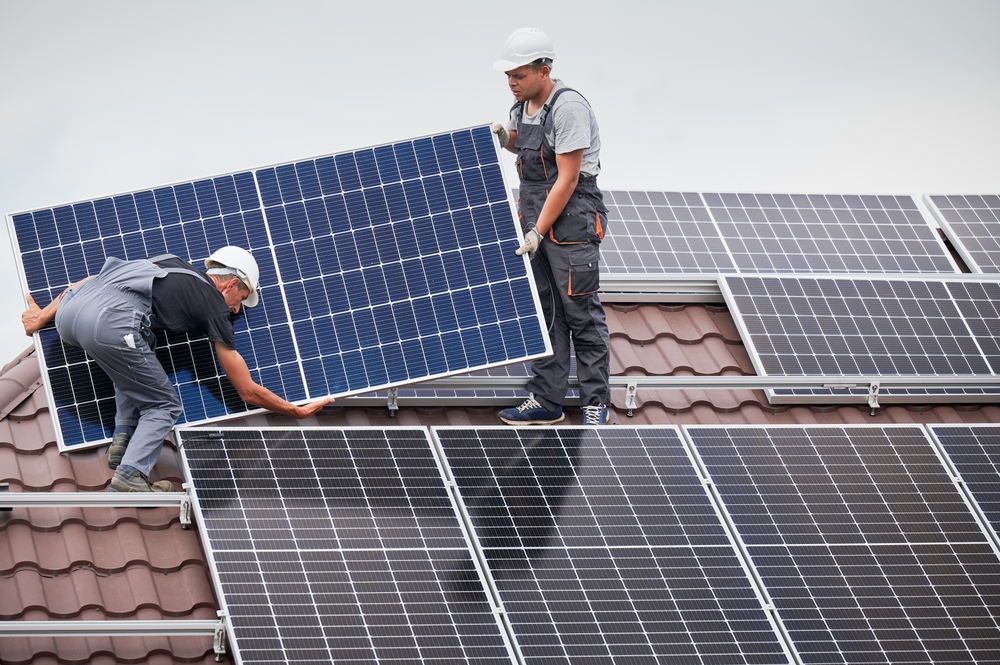
If you're looking into installing solar panels on your property, whether residential or commercial in nature, one of the things you'll be considering along with your solar power company is whether your property is suitable for such an installation. And while solar panel installation capabilities have come a long way in the last decade and are nowhere near as restrictive as they used to be, there are still a few important themes to be thinking about here.
At Intermountain Wind & Solar, we're happy to assist clients with themes like these as they consider any of our commercial or residential solar power solutions in Idaho or Utah. Here are some of the chief areas that need to be confirmed while ensuring a given property is suitable for solar panel installation.
Firstly, before we move to the specifics of any given property, it's important to determine which surface we plan on using for the solar panel installation. Is a rooftop our goal, or will ground-mounted panels be more suitable?
This question sets the baseline for how you'll assess your site. If you plan to use your roof, which is the most common approach, you should read our next several sections. If you already know that you plan to use a different surface for solar panels, however, you can skip to the section below titled "Identifying Alternative Surface."
One of the most important factors when assessing a roof is the direction that it faces. Most of our solar panel installations are best served with a south-facing roof, as this will maximize sun exposure throughout the day.
East and West facing roofs can provide some decent energy production during certain periods of time, but their limited exposure to direct sunlight make them a less appealing option.
The height of your roof will also play an important role, as it will determine the number and size of solar panels that can be installed. Generally speaking, lower roofs are better suited for ground-mounted panels while taller roofs may be able to accommodate more units at once.
You also need to consider the load bearing capacity of your roof. Most roofs will be able to handle the weight of several solar panels, but it's important that you confirm this with a structural engineer if necessary.
Another factor to consider is the age of the roof itself. If your roof is relatively new, you may not be required to replace it prior to installation. But if your roof is older than 15-20 years, it may need to be replaced before moving forward with any solar work.
As you're assessing the suitability of your roof for solar panel installation, make sure to take into account any existing obstructions such as air conditioning units, skylights, or vents. These will all need to be worked around in order to ensure that your solar array can provide maximum efficiency.
The final roof-related consideration is whether your roof needs to be tilted for optimal performance of the solar panels. Generally speaking, a tilt of 20-30 degrees will provide the best possible energy production. If this isn't possible due to architectural considerations or other issues, however, flat roofs can still accommodate solar panel installation with some efficiency loss.
If your roof isn't suitable for solar installation, another option is to install ground-mounted panels. This may be a better choice in certain cases due to the size of the property or other factors. In these cases, you'll need to assess the suitability of your land for this type of installation.
There are several considerations here, including the direction of the panel array in relation to the sun's path, any possible obstructions from trees or other buildings, and any available connection points for power and grid access.
Regardless of which surface you decide on, it's important to take into account any possible shade that could affect the efficiency of your solar array. Trees or buildings close by can cast a shadow and reduce the amount of sun exposure that your panels receive.
For maximum efficiency, try to position your array away from any sources of shade as much as possible. Additionally, consider trimming any obstructing trees or shrubs prior to installation in order to maximize the efficiency of your solar panel array.
Another important factor to consider is the existing electrical infrastructure of your property. This will determine how the solar array is wired and connected, as well as any additional equipment that needs to be purchased or installed.
Your solar power company should be able to provide you with more information about these requirements, so make sure you discuss them before moving forward with an installation.
By taking these various factors into account, you'll be well on your way to successfully installing solar panels on your property and taking advantage of the many benefits that come with it!
And at Intermountain Wind & Solar, we're here to help you along every step of the way. Contact us today to get started on your solar journey, whether you're a Utah or Idaho client.





"All of the photos on this website are of real projects that Intermountain Wind & Solar has designed and installed.
We are proud to show off and stand behind our work."